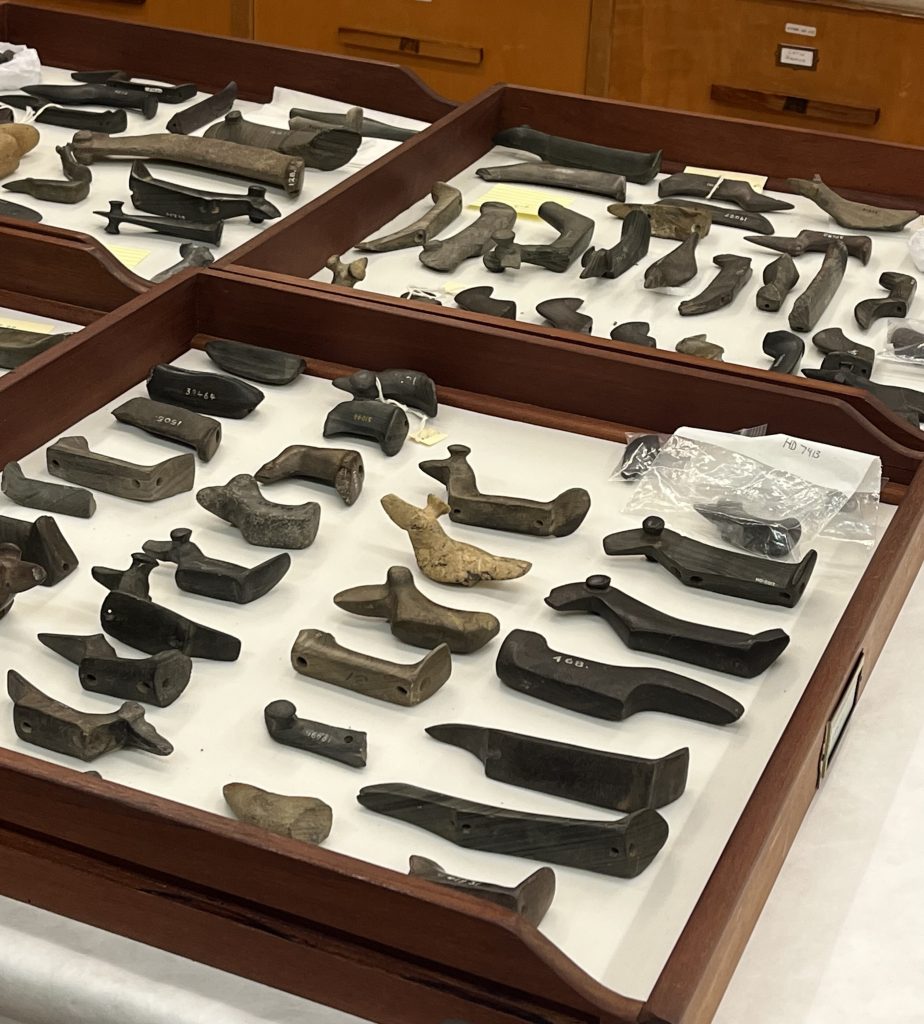from Mina Ali

On January 18, 2023, the Royal Ontario Museum collaborated with GRASAC to host a virtual tour of the birdstones housed in the Archeology of the Americas collections, with the help of Dr. Tiziana Gallo’s knowledgeable guidance, April Hawkins’s support, and the GRASAC team members’ preparation. GRASAC used its Mobile Community Research Kits, funded by a Canadian Foundation for Innovation and Ontario Research Fund grant, to host the visit. Special thanks to GRASAC RA Sheila Wheesk for leading the smudging of the birdstones in preparation for the visit.
Dr. Tiziana Gallo, whose research on birdstones in Southern Ontario is supported by the Wendy and Leslie Rebanks Postdoctoral Fellowship, guided visitors through their encounter with the birdstones by first giving a presentation on their history and the archaeological knowledge currently available. Gallo explained, for example, that the name originated from how early archaeologists like David Boyle categorized the differing shapes of the stones – some that looked like loons emerging from the water and others unlike birds but rather butterflies or caribous – together under the same heading. Birdstones were often found in clusters in certain regions of Southern Ontario and were excavated by archaeologists. For further reading, Gallo recommended the rich historical text Collections and Objections by Michelle Hamilton, which details the history of the evolving relationship between archaeology, museums and Indigenous nations in Southern Ontario.
In the second half of the tour, Dr. Gallo took many questions from the online audience about the birdstones and supplemented her responses by either directly showing the stones to the camera or placing them under the microscope to emphasize subtle details, like the banding, polish, or wear on the stones. Members of the audience were able to see certain one-of-a-kind birdstones: the double-headed birdstone, the singular birdstone bead, and the birdstone with concave eyes. Furthermore, members of the audience asked if certain stones presented were from regions in Ontario they might have a personal or familial connection to, demonstrating the importance of using Mobile Community Research Kits to connect people to their own history through accessible engagement with collections.
If you would like to host a tour, have ideas for other virtual tours, or would like to learn more about the kits and how to borrow them, please get in touch with us! You can also contact us if you missed the tour but would like to see the video of it. Our colleagues at the ROM are happy to receive your questions and provide additional information about the birdstones in their care.

[…] Birdstones Visit at the ROM, by Mina Ali […]